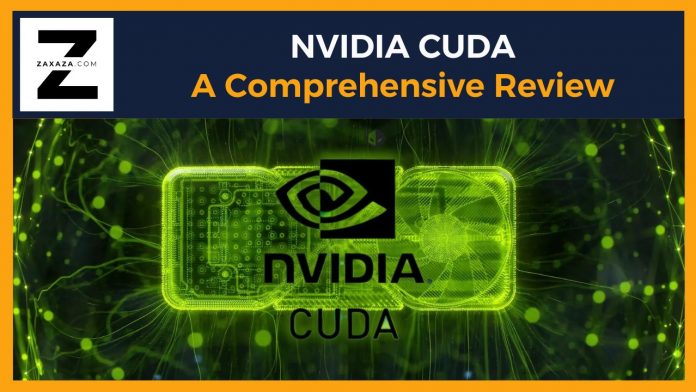NVIDIA CUDA, a parallel computing platform, has revolutionized the way we process complex data-intensive tasks. This technology leverages the massive parallel processing power of NVIDIA GPUs to accelerate various applications, from scientific simulations to machine learning and artificial intelligence. In this article, we'll delve into the intricacies of NVIDIA CUDA, exploring its key features, benefits, and real-world applications.
Understanding NVIDIA CUDA
CUDA, short for Compute Unified Device Architecture, is a programming model developed by NVIDIA to harness the parallel computing capabilities of its GPUs. It provides a high-level programming interface that allows developers to write code that can be executed on the GPU's massively parallel processing cores. By offloading computationally intensive tasks to the GPU, CUDA can significantly boost performance compared to traditional CPU-based approaches.
Key Features of NVIDIA CUDA
- Parallel Computing: CUDA enables developers to write code that can be executed simultaneously across multiple GPU cores, leading to substantial performance gains for data-parallel workloads.
- C++ Compatibility: CUDA is based on the C++ programming language, making it easy for developers to learn and use.
- CUDA Toolkit: The CUDA Toolkit provides a comprehensive set of tools and libraries for developing CUDA applications, including compilers, debuggers, and libraries for common tasks like linear algebra and image processing.
- Heterogeneous Computing: CUDA supports heterogeneous computing, allowing developers to combine the strengths of CPUs and GPUs to optimize performance.
- Deep Learning Integration: CUDA is tightly integrated with popular deep learning frameworks like TensorFlow and PyTorch, making it a powerful platform for training and deploying deep learning models.
Benefits of Using NVIDIA CUDA
- Accelerated Performance: CUDA can significantly speed up computationally intensive tasks, such as scientific simulations, machine learning training, and data analytics.
- Scalability: CUDA applications can be easily scaled to handle larger datasets and more complex workloads by using multiple GPUs.
- Efficiency: CUDA's parallel processing capabilities can improve the efficiency of resource-intensive applications.
- Developer Productivity: The C++-based programming model and comprehensive CUDA Toolkit make it easier for developers to write and maintain CUDA applications.
Real-World Applications of NVIDIA CUDA
- Scientific Computing: CUDA is widely used in fields like physics, chemistry, and engineering for simulations, modeling, and data analysis.
- Machine Learning: CUDA accelerates the training and inference of deep learning models, enabling breakthroughs in areas like computer vision, natural language processing, and recommendation systems.
- Data Analytics: CUDA can be used to speed up data processing tasks, such as data cleaning, feature engineering, and model evaluation.
- Financial Modeling: CUDA can be used to accelerate financial simulations and risk analysis.
- Video Processing: CUDA is used for real-time video processing applications, such as video encoding, decoding, and analysis.
Conclusion
NVIDIA CUDA has emerged as a powerful and versatile platform for accelerating a wide range of applications. By leveraging the massive parallel processing capabilities of NVIDIA GPUs, CUDA can deliver significant performance gains and enable new possibilities in fields like scientific computing, machine learning, and data analytics. As CUDA continues to evolve, we can expect to see even more innovative and groundbreaking applications powered by this technology.

